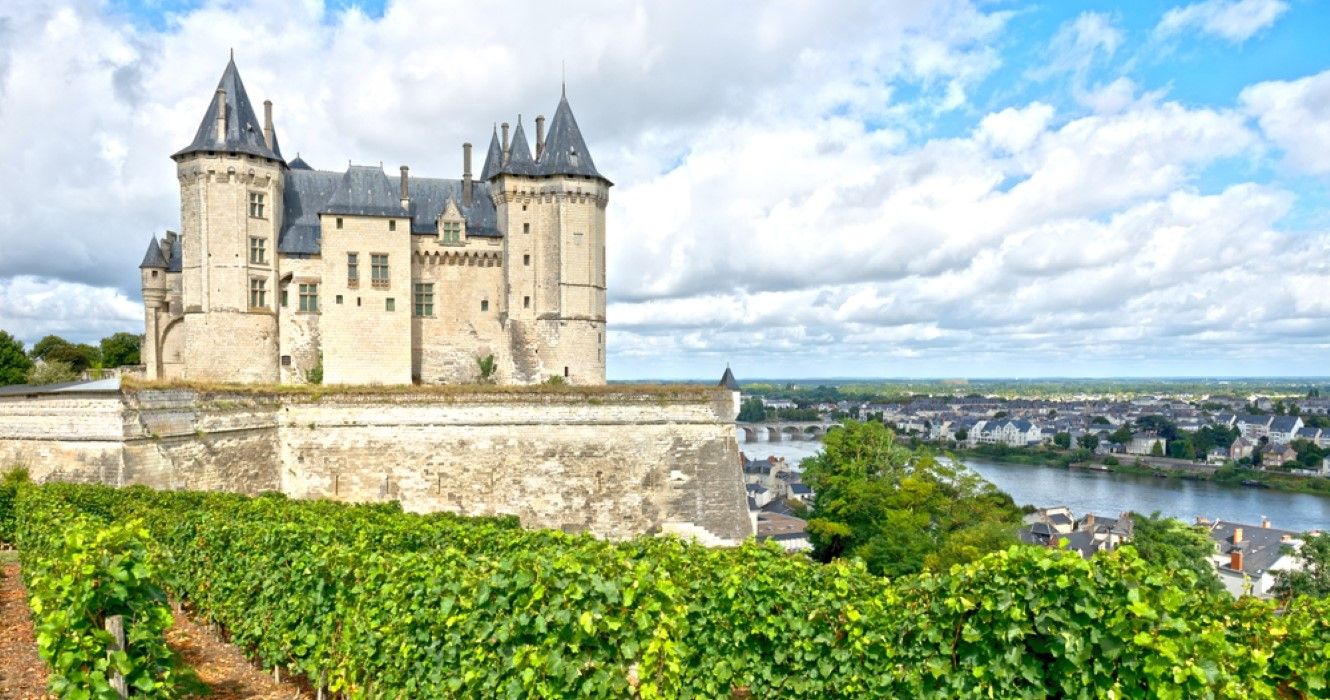Etched as a significant part of the history of France, the Loire Valley is synonymous with sophistication and splendor. The region is home to the historical chateaux that housed kings and Royals. Apart from traces of royalty, numerous vineyards lie across the valley's landscapes.
Perhaps one of the main reasons tourists explore the region is that wine-making has been part of this area for over 2000 years. Vineyards stretch from Nantes to Sancerre, producing various wines, including red, white, rosè, and sparkling. Travelers visit this region to explore the wineries while enjoying the numerous wine festivals.
Why Is Loire Valley Famous?
Formed after its conquest by Julius Caesar, the Loire Valley has witnessed rivalries in different eras. Various adversaries fought over the region until Emperor Augustus brought peace and stability to the area. The stability influenced the growth of towns such as Orléans, Lé Mans, Angers, Chartres, Bourges, and Tours.
Roman influence is still evident in this region's culture. However, the Romans' greatest cultural impact on this area was introducing the first vineyards in the region. Although wine existence gained popularity in the first century, wine-growing fully took off around the fifth century.
From the ninth to the 12th century, monks developed and maintained wineries. Later on, the area would be preferred by kings starting with King Charles VII of France. These royals helped popularize wines by serving them in courts and exporting them to other countries.
Wineries suffered a major blow during the French Revolution but picked up later after the historical event. Due to its rich history, in 2000, UNESCO declared the region between Chalonnes-Sur-Loire and Sully-sur-Loire a World Heritage Site.
Loire Valley has over 20 grape varieties, 87 appellations, and over 7000 vineyards that produce more than 400 million bottles of wine. This broad wine-growing culture offers an eclectic gastronomic touch to the area, making it the third largest wine-producing region in France.
Wineries In Loire Valley
The longest wine region in France is home to numerous wineries. The Loire Valley is divided into three regions: Upper Loire, Middle Loire, and Lower Loire, all with distinctive vineyards and appellations.
Different climates and geographical conditions influence the vineyards. These conditions, including the type of soil, play a significant role in determining the type of grape variety that can be grown in a region.
The Loire River passing across the valley also influences the microclimates of the region's wineries. The river raises the soil temperatures, promoting the growth of grapes in the north and south of the valley, areas that are both unfavorable for viticulture.
Spring marks the new cycle of growth in Loire Valley. Vintners start preparing their vineyards during this time when temperatures are cool with chances of frosts. Additionally, a few vintage wines continue to grow during this time.
Wine merchants work on the vines improving the quality while removing unripe fruits. The vines stop growing after berries harden a little and change color. The growth cycle ends in August, ushering in the flourishing period that happens in summer.
The summer weather flourishes vines, rapidly readying them for the harvesting season taking place in autumn. The beginning of harvesting depends on the ripeness of the vines and the weather. This process often occurs during autumn, a phenomenon famous for many travelers.
Wine cellar masters bring in the grapes, destem, and squeeze them to start fermentation. The harvesting process ends in winter, and vine pruning starts. Pruning continues till March as fermentation of the wine in the cellars is completed.
These processes happen all over the valley, starting from Nantes to Saumur. Visitors can visit these regions, including Nantes and Anjou, to explore some top wineries in the country.
Nantes
Pays Nantais is one of the first areas in the region that was introduced to wine by the Romans. Renowned for producing white wine, the region is famous for Muscadet, the largest white wine appellation made from Melon de Bourgogne grapes.
Several other appellations are also found in this area, including Coteaux d'Ancenis and Muscadet et Maine. Tourists visit this region to explore the various wineries, including Domaine Landron Chartie, which practices organic viticulture.
Saumur
Saumur is home to the third-largest sparkling wine appellation in France. Underground tunnels have been drilled from the castles to serve as wine cellars. The region's specialties include Bulles and Saumur-Champigny.
Château de Chaintres is one of the best wineries to visit in the area. Travelers visit the commune to explore the various appellations, including Cabernet de Saumur and Saumur Blanc.
Anjou
Located in Middle Loire, Anjou commune is renowned for rosè wines. This Loire region produces the best sweet wines, including Bonnezeaux and Coteaux du Loire. Appellations in the area include Cremant de Loire produced organically and Coteaux du Loire.
Red Anjou and Rose d'Anjou are the region's specialties. Visitors explore the region, trying out the variety of sweet wines in store for them in vineyards, such as Domaine Sauveroy - Grands Vins de Loire Winery. Apart from the wineries, there are several other things travelers can explore in the area, including the following.
- Tourists can visit the multiple châteaux lying in the valley and learn the history of their existence.
- Tourists can also explore the cities that lie across the valley, learning more about their inception and growth.
- Travelers can also visit the various landmarks lying along the valley, including the Chartres Cathedral.
There's a lot that the Loire Valley offers, including being home to a deep wine culture that contributes significantly to the area's traditions. Villages and vineyards lie along the valley benefiting from the magnificent Loire River passing across the valley. The region has been practicing viticulture for over two millennia, making it one of UNESCO's World Heritage sites. Travelers explore this region to learn more about the craft of wine-growing, its history, and its inception in the region.

